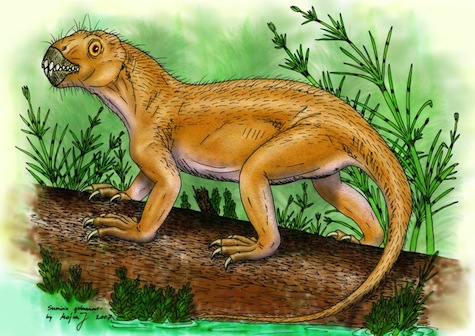If not for the world’s worst mass extinction, the Age of Mammals might have started much sooner.
Before the dinosaurs, for a time spanning 298 to 252 million years ago, landscapes across the planet were dominated by our distant predecessors and relatives. These were the synapsids—animals previously called “mammal-like reptiles” until paleontologists realized that this common term was all wrong.
These strange and unfamiliar creatures—adorned with sails, saber-fangs, and weird skull ornaments—were protomammals that were almost totally eliminated by a catastrophe that dramatically changed the course of life on Earth. Get to better know your distant relatives in this list of 9 synapsids that ruled the Permian world.
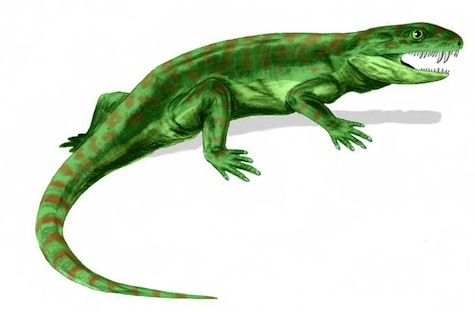
Eothyris
Known from a single, two-and-a-quarter-inch skull found in the roughly 280 million year old rock of Texas, Eothyris isn’t quite as charismatic as some of its relatives. But this little creature had two features that show it was part of our extended family.
Most important was a single opening behind the eye for the attachment of jaw muscles. (Early reptiles were different in that they had two.) And in those tiny jaws Eothyris had a set of several canine-like teeth in the upper jaw. This was an early sign of differentiated teeth that’s now so apparent in the incisors, canines, premolars, and molars of mammals. While not one of our direct ancestors, Eothyris nevertheless represents the superficially lizard-like prototype of early synapsids.
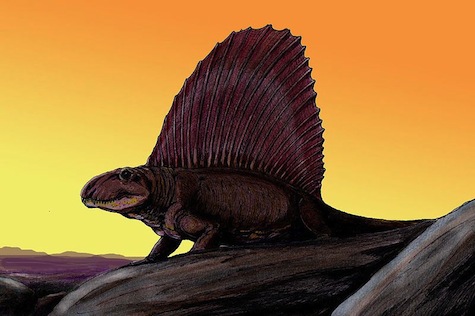
Dimetrodon
Everybody loves Dimetrodon. This sharp-toothed synapsid is the poster fossil for the time before the dinosaurs, made famous by that flashy sail.
Even though the soft tissues rotted away over 272 million years ago, paleontologists know Dimetrodon had a sail from an extensive set of elongated neural spines along the animal’s back. But what was the sail for, and why did it evolve?
The spindly bones don’t have the necessary structure to conduct blood to that long-lost sail membrane, so it’s unlikely that Dimetrodon was using its sail to heat up or cool down. Display is a more popular hypothesis—such a big billboard would have allowed Dimetrodon to identify each other at a distance or even show off during competition for mates. Too bad we can’t ask Dimetrodon directly about how such a striking structure evolved.
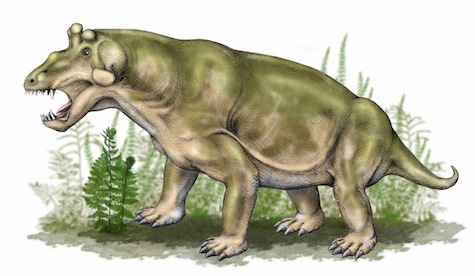
Estemmenosuchus
The skull of Estemmenosuchus looks like something you’d be more likely to find in a Hollywood creature workshop than the fossil record. Topping off a 10-foot-long body hunched down in a sprawling posture, the synapsid’s head sports a double set of antler-like struts jutting out from the cheeks and above the eyes.
The synapsid’s teeth make it look stranger still. Estemmenosuchus had pointed incisors and large canines followed by a row of small, peg-like teeth. This appears to be the dental toolkit of an omnivore. Estemmenosuchus may have been as comfortable shearing leaves as tearing flesh.
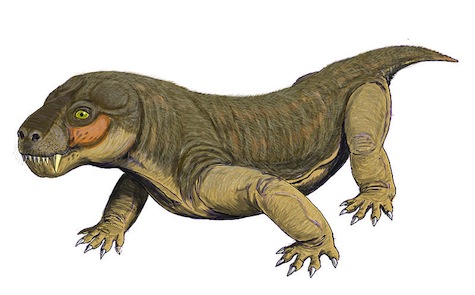
Euchambersia
Looking something like a cross between an iguana and a Dachshund, Euchambersia pursued prey through the arid habitats of ancient South Africa around 252 million years ago. But even though this little hunter looked similar to the other therapsids—a “beast-faced” subset in the synapsid family tree—Euchambersia differed by holding a potent surprise in its bite.
From grooves in its teeth and a pocket in the upper jaw that could have housed a gland, some paleontologists have suggested that Euchambersia was venomous. When the therapsid sunk its conical canines into prey, venom may have dripped from that jaw gland down the tooth and into the victim. Euchambersia may have employed such a deadly bite over 200 million years before snakes independently evolved the same strategy.
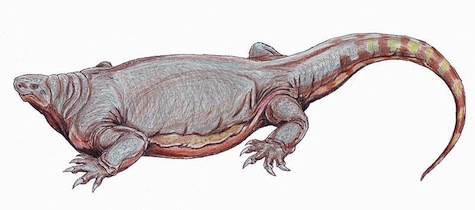
Cotylorhynchus
I can’t help but feel bad for Cotylorhynchus. The synapsid looks like an evolutionary joke.
With bodies that stretched about 18 feet long, these 275 million year old herbivores had skulls not much bigger than yours. This is not a paleontological mistake—multiple specimens have shown that these bulky cousins of ours really had ridiculously-tiny heads. Not that these barrel-bodied synapsids needed much cunning to evade predators. As the largest animals around, their size alone was a deterrent to Dimetrodon and similar predators of the age.
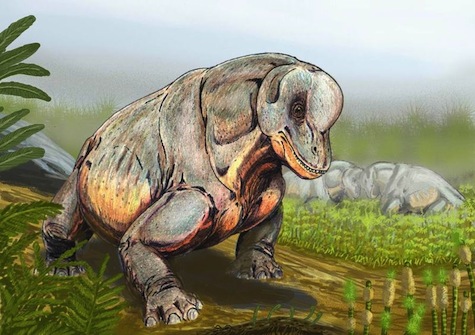
Tapinocephalus
Carnivores and omnivores weren’t the only showy synapsids. Tapinocephalus, a 10-foot-long herbivore that lived about 260 million years ago in South Africa, was a stocky proto-beast with a thick, inflated skull roof. Paleontologists hypothesize that they put that reinforced bone to work on each other in head-butting contests, an early portent of the internet comment threads we, their distant cousins, carry on.
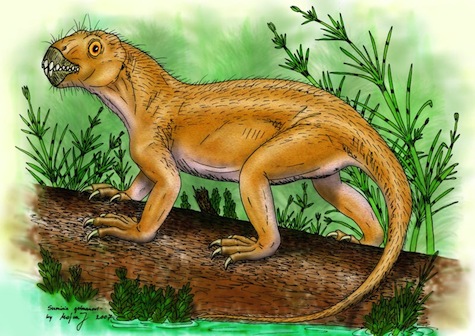
Suminia
Suminia was a gawky-looking synapsid. From skeletons found among 260 million year old deposits in Russia, researchers have found that this critter had a set of large, serrated, single-cusped teeth suited for cleaving vegetation. And a recent reassessment of the synapsid’s skeleton hints that Suminia did so above the heads of competitors and predators.
In a study of the limbs, fingers, and tail of Suminia, paleontologists Jörg Fröbisch and Robert Reisz found that Suminia had the skeletal hallmarks of vertebrates that spend a great deal of time in the trees. If this is correct, then Suminia may have been one of the first arboreal vertebrates, marking the early days of competition for food that pushed some synapsids into the trees. Think of it as the Permian equivalent of suburban sprawl.
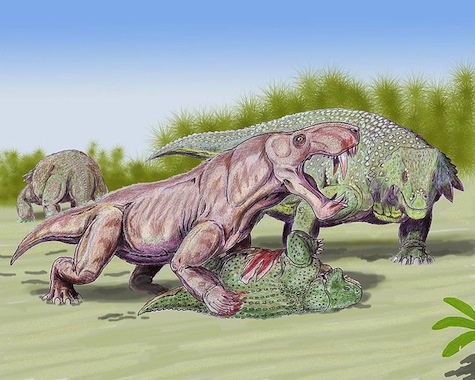
Inostrancevia
One look at Inostrancevia is all you need to see why it was the inspiration for a recurring villain on the sci-fi show Primeval. At approximately 11 feet long, this saber-fanged carnivore was the largest of the fearsome gorgonopsids and the apex predator of prehistoric Russia over 254 million years ago. The world wouldn’t see predators of their size or prowess until millions of years later, after the downfall of the synapsids, but given the carnivore’s fearsome bearing it should be at least as well known as the later dinosaurian hunters that overshadow it.
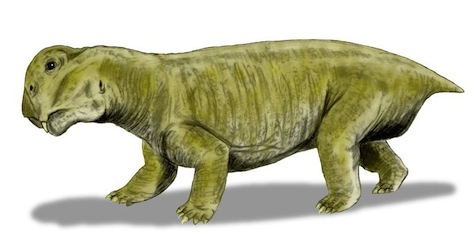
Lystrosaurus
Not all synapsids went extinct at the end of the Permian. Not only did some cynodonts—ancestors of the first true mammals—survive, but a few other groups straggled along into a new balance dominated by the precursors of crocodiles and dinosaurs. The most successful of these oddballs was Lystrosaurus.
Found in the 250 million year old rock of South Africa, India, and Antarctica, this widespread synapsid had a turtle-like beak fitted with two tusks and a stout, round body that housed the stomach space to break down the plants Lystrosaurus scrounged.
No one knows why Lystrosaurus lived to thrive in the Early Triassic world. The answer could be anything from a matter of luck to specific traits, such as a burrowing habit that predisposed the animals to low-oxygen levels that took out other species. But Lystrosaurus does pass down one important lesson. Even in the wake of the worst extinction of all time, life bounced back and thrived anew.
Brian Switek is the author of My Beloved Brontosaurus and Written in Stone. He also writes the National Geographic blog Laelaps










